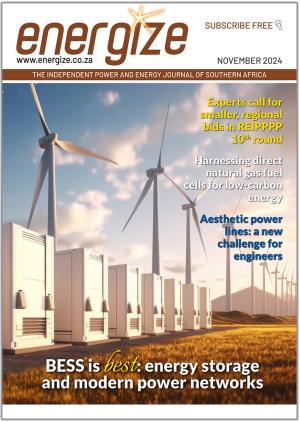The Electricity Regulation Amendment (ERA) Act, signed into law by President Cyril Ramaphosa in August, aims to overhaul South Africa's electricity sector. However it presents several challenges that could hinder its effectiveness, says Rod Crompton, Visiting Adjunct Professor at the African Energy Leadership Centre at Wits Business School and former National Energy Regulator of South Africa (NERSA) regulator.
The ERA Act outlines a vision for a more competitive and transparent energy market, but there are concerns. These challenges include limited grid access for independent power producers, regulatory uncertainty, and potential ministerial overreach. All of these issues could stifle competition and erode investor confidence.
The Act proposes the creation of a state-owned Transmission System Operator (TSO), which will operate independently within five years. This entity will take over Eskom's transmission responsibilities and manage the national grid. However, until the TSO is fully operational, Eskom's newly formed National Transmission Company South Africa (NTCSA) will handle the transmission of electricity. Although this move is seen as a step towards Eskom’s long-awaited restructuring, Eskom’s control over transmission during this interim period could pose serious risks to the emergence of independent power producers (IPPs).
Third-Party Access and Competition
The Act's reliance on 'third-party access' for transporting electricity means that independent energy generators must use the transmission or distribution grid owned by Eskom. However, Eskom will prioritise its own customers, potentially limiting the capacity available for third parties. For example, if Eskom's customers use 90% of a transmission line's capacity, only 10% remains for independent generators, creating a significant barrier to competition and favouring Eskom and municipal utilities.
Licence duration and tariffs
NERSA has a 20-year license cap for independent energy generators, which it may choose not to renew. Its current tariff methodology allows for infrastructure depreciation over the lifespan of power stations, often 50 years. The 20-year cap could necessitate higher tariffs to cover depreciation within a shorter timeframe, impacting the cost of electricity.
This also raises concerns about intergenerational equity. Under the 20-year framework, those using the infrastructure in the initial two decades will bear the full depreciation costs, while future users will benefit without contributing to these costs.
Ministerial discretion
The minister of electricity and energy can make significant decisions, such as licensing requirements and deviations from integrated resource or transmission development plans, without industry consultation. In a sector moving towards increased private ownership, such discretion may undermine investor confidence by introducing uncertainty.
However despite these issues, the ERA Amendment Act is a positive step in the country’s long electricity sector reform process, which began with the De Villiers Commission of Inquiry in 1983. This inquiry recommended transforming Eskom from a non-profit to a for-profit entity.
The 1998 White Paper on Energy Policy further advanced reform by setting a framework for market liberalisation, leading to the establishment of Electricity Distribution Holdings and regional electricity distributors.
The electricity crisis and global trends such as the Fourth Industrial Revolution and climate change prompted further reforms. The 2019 'Roadmap for Eskom in a Reformed Electricity Supply Industry' paper led to the creation of Eskom’s three distinct subsidiaries—generation, transmission, and distribution—culminating in the formation of NTCSA and the enactment of the ERA Amendment Act.
While the ERA Act presents several challenges, its implementation marks a significant milestone in South Africa's ongoing electricity reform journey.















